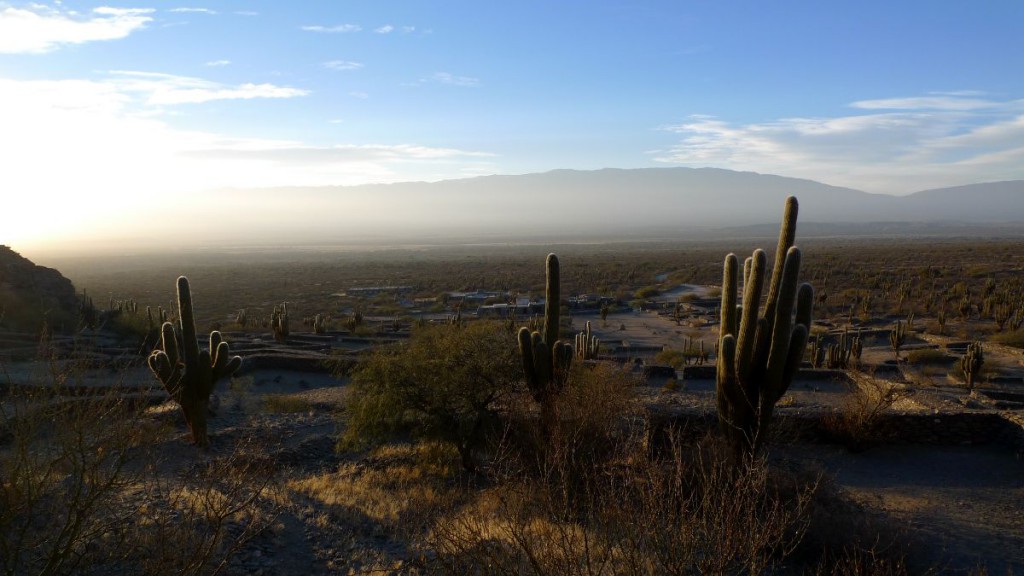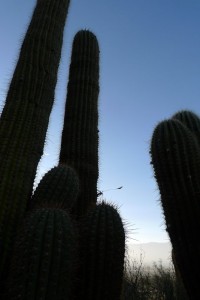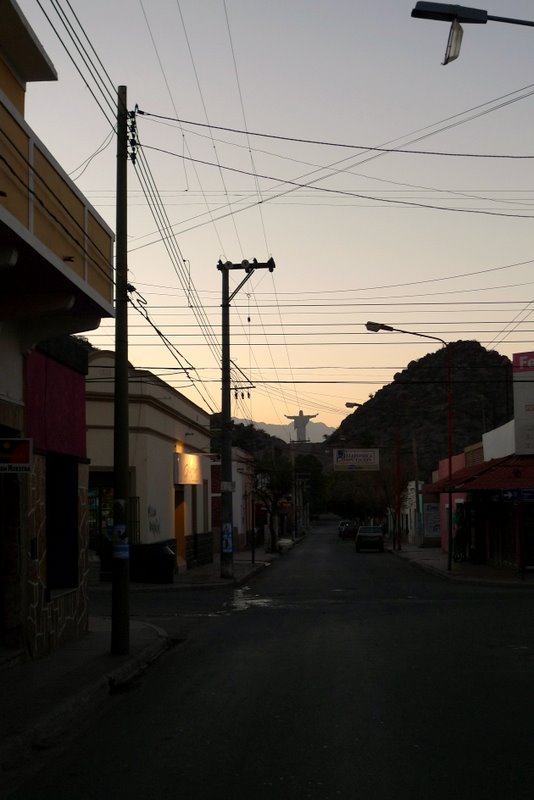There is an openness and a scale of the landscape in northern Argentina that reminded us of Australia. There is a quality of the light that is softer; particularly at the higher latitudes. In the north the light can be harsh, and the mountains create deep shadows. It can be hard to take a good landscape photo.
The landscape is young and fresh; but between the mountains and where they plateau, are gorges, which are weathered ancient sediments. Strange geology abounds.
The evenings and sunrises are soft and golden. I took an early morning bus from Cafayate to Quilmes, a ruined city of the Diaguita. The people of Quilmes succesfully withstood the invasion of the Incas from the north, but could not survive the Conquistadors.
Walking from the road to the ruins in the darkness, the skin of the saguaro cacti shone dimly in the moonlight around me. When the sun rose, their silhouettes were dark against the dawn.
The people are quiet and humble. They sit patiently on rickety buses, zigzagging back and forth along hairpin roads, chewing coca. They might ask to be let off at on the side of the road, at a place appearing no different to any other, and disappear into the cactus and scrub to a distant house.
We were there in winter, and it was cold and dry. In the town of Humahuaca, at 3500m altitude, we first ate Oca (Oxalis tuberosa), an Andean staple similar to potato in texture and flavour, but not related. Oca tubers come in an interesting range of colours. After the bland food that we had been eating for several weeks, these fresh vegetables were much appreciated.
In Chilecito
We travelled to Chilecito in order to visit Parque Nacional Talampaya, which we thought was nearby, see a botanical garden of cacti, and various other attractions. Being the first place in the northwest we had been to, we were excited to arrive in ‘outback’ Argentina after a few weeks in cities. We arrived early in the morning, and sat in the petrol station, drinking coffee and eating medialunas. When the sun rose, we walked into the centre of town to find accommodation. At the first hostel we knocked at, no one answered, so we walked around the corner to find another. At this place, there were guests eating breakfast, but we couldn’t find any staff. We left and retreated to the central plaza for some breakfast of our own, and to find an internet cafe to try and find a place to stay.
There was a place advertised just out of town; it was a bit expensive for us but we were running out of options, and it was close to the botanical gardens that I wanted to visit. We took a taxi out there. The driver waited while I walked to the house and knocked. Once again, there was no answer. On the way back to town, we asked the driver to let us out as we went past the cactus garden. Here also, the gates were locked and no one responded to our knocking. We walked the rest of the way back to Chilecito.
After all this had happened, we had still only been in Chilecito for a few hours, but we were starting to get discouraged. We decided to try once more to find a place to stay, and returned to the first hostel we had tried. We knocked on the door for some time, and eventually it opened. The woman that opened the door appeared flustered and confused. A man was emerging from a doorway behind her, and we got the feeling we may have interrupted them having sex. Embarrassed, she led us to a room through an open courtyard, and explained that it was the only room left. It smelled terribly, and we left.
We went straight to the bus station. When we got there, we realised that we were not even very close to Parque Nacional Talampaya, which was our main reason for going to Chilecito in the first place. We got on the next bus to Villa Union, a nearby town much closer to the park.




